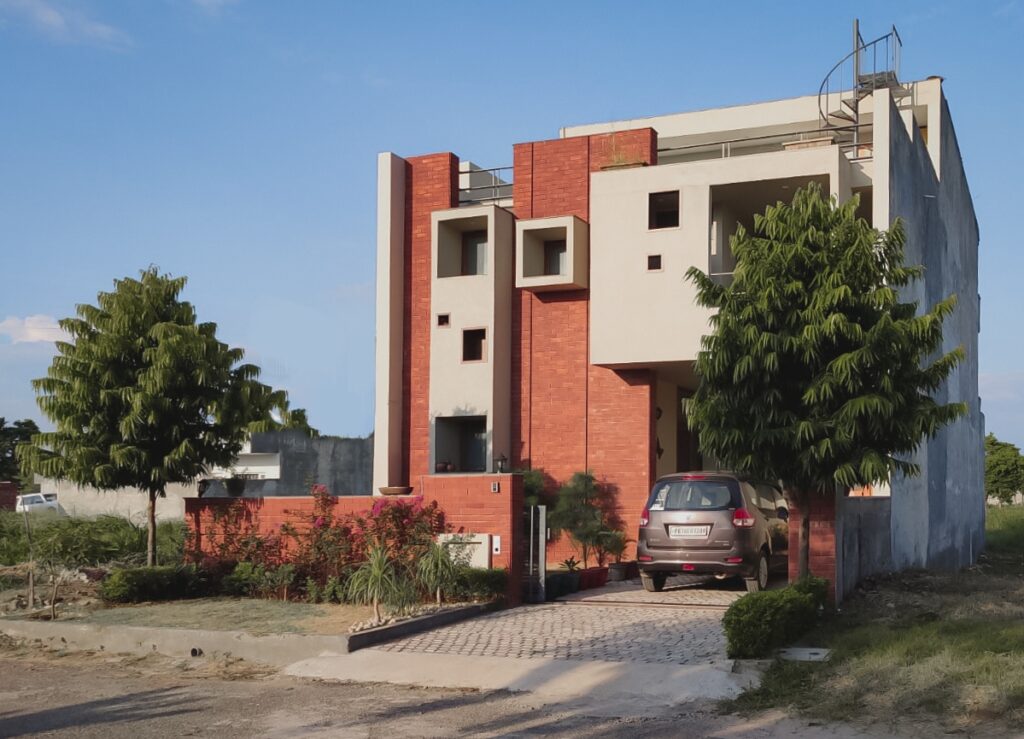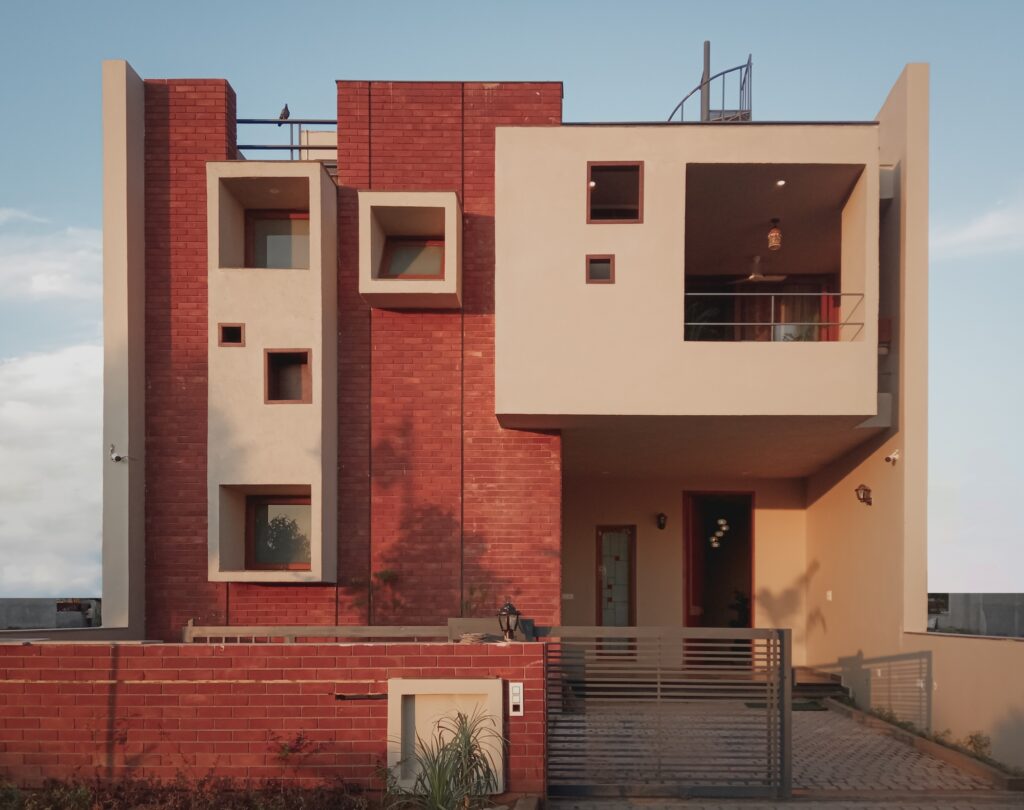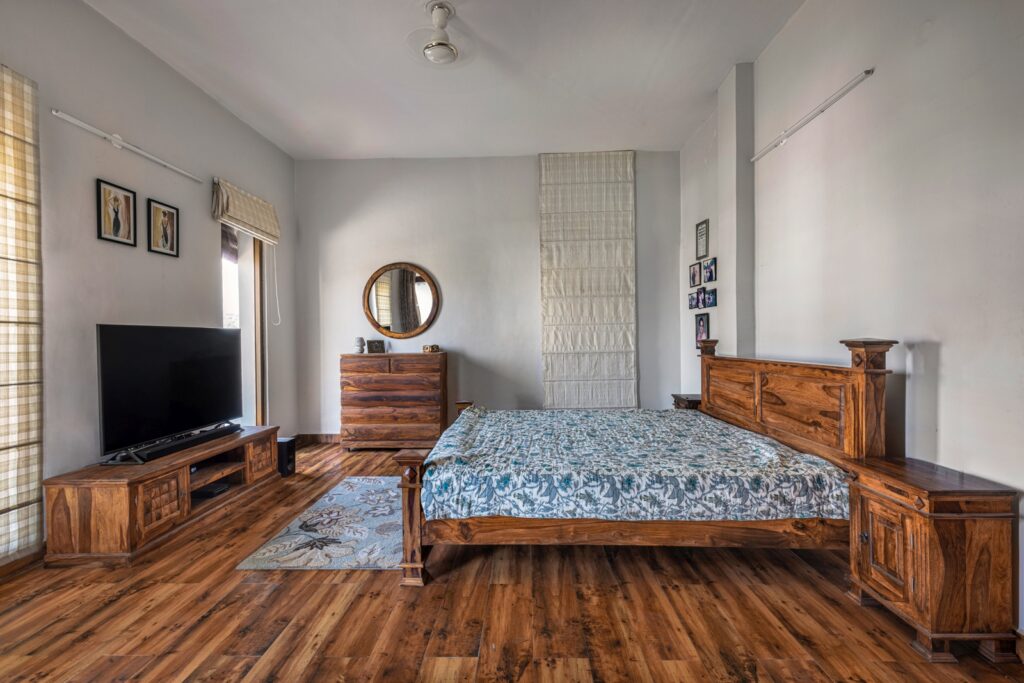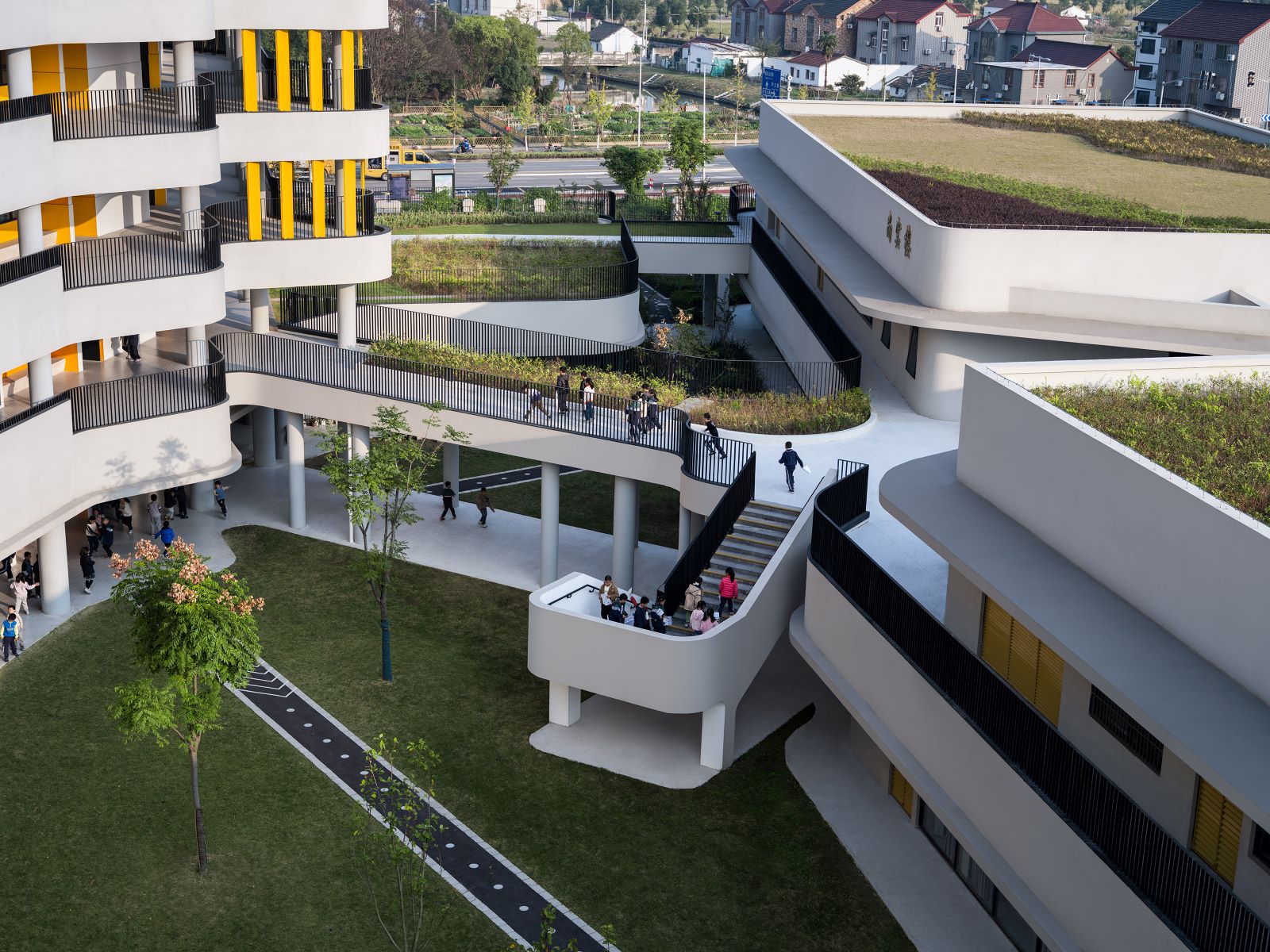The client, Mr and Mrs Khosla, who comes from an army background, desired to have a house that talks opulence, considering their past references. Being travellers, the clients had a huge collection of artefacts which required to be accommodated. The house was to reflect the lifestyle and sustainability together. The deep plot size was a challenge in itself.
The metaphor of a cocoon was used to create the entire built form.

CONCEPT – CUCOON
The house is southwest facing and was imagined to be a largely inward-looking house that offers multiple experiences within. The depth of the plot 90 ft was used to the advantage by creating the built around the periphery and keeping the central part open.
The idea was to create an oversized cocoon as an archetype where one enjoys a large enclosure within


THE DIAGONAL ROUTE AND FRAMED OPENINGS
The length of the plot was used to enhance the experience of unfolding experiences. The entrance is planned from the southwest corner into a foyer space, and one’s vision travels straight onto the diagonally opposite corner getting clues of the greens in the backyard. Then there are a set of planes that appear to unfold the spaces in between. The light of the central courtyard makes one move towards it and arrives in the middle of the site width with a sunken courtyard flooded with natural light on one side and a relatively dark seating arrangement with a beam of light from a linear skylight on the other.
The formal seating adjacent to the internal staircase is also separated by a plane with a cutout that offers framed views from the other side and also leads one to the upper level, .where the second step is shaped to be tapered to communicate the idea of opening up the diagonal route. This further leads one towards the Bar and dining, with the last plane unfolding the kitchen area.



These multiple framed openings allowed the users to exhibit their belongings from travels
COURTYARD
The sunken courtyard has a bar behind one plane with a cutout that allows one to connect to the court space from the bar area. The only bedroom on the ground floor towards the front side has one window opening towards the courtyard that receives the natural light from the court space. The other is towards the entrance verandah.




BLOCK THE SOUTH WEST
The house is a southwest-facing unit that received the harsh summer sun for six months of the year. In order to make it passively cool, the services like the toilets and the wardrobe spaces were positioned on the front side to block the southwest sun and keep the interiors cooler. As a result, both the bedrooms towards the west corner of the two levels receive natural light from the courtyard space. The first-floor toilets were kept at a low height to allow some more natural filtered light between the slabs through glass bricks.
RECESSED OPENINGS AND FACADE
The harsh natural light from the southwest was controlled by deepening the verandah spaces to create shaded spaces during summers and also enjoy the winter sun during the late afternoons. The openings in the toilets have also been recessed and given a form following a square as the basic shape. The hollow cube of the upper-level verandah, in connection with the square openings of the toilets, allowed us to create an expression of planes in interaction with the protruding boxes.
The use of brick cladding allowed the hint of the context the house was sitting in.

VARIABLE VOLUMES
While the lower level is kept at the same height for the expression of diagonals to enhance, as one arrives on the first-floor level, the linear skylight on the southeast corner fills the double-height study/family area separated by a bridged connection on the second floor. The levels allow one to explore the jharokha window of the bedroom on the upper level, which allows one to have a dialogue with the neighbouring spaces from within. The study corner on one side received ample light from this court. This level has a well-lit central common area and three bedrooms planned on the periphery.


MATERIALS
The choice of materials has been kept to the basics. Vitrified flooring across the house and a muted ochre with texture finish have been used for wall finishes. Hammer finish black granite stone has been used for the courtyard wall. The protruding modern jharokha windows with light walnut polish come in striking contrast with the surroundings and remain one of the few highlights of the space. Brick cladding on the façade with a mud-like paint finish in texture brings the connection between modern and traditional.
Drawings






Project Facts
Design Team: Ar. Aman Sohal ( principal architect); Niharika, Mashaara, Arshjot
Photography by: Purnesh Dev






